After covering so many rumors and leaks about it, it’s a tad surreal to actually have Google’s new streaming device in hand. But it’s real. This is the Chromecast with Google TV, Google’s latest and greatest streaming dongle — now packing a new user interface based on Android TV and a remote control.
We put this new streaming device through its paces, including performance tests to see how it fares compared to other streaming devices on the market. So if you’ve been eyeing an affordable streaming device, and you’ve been wondering if this $50 dongle has what it takes, let’s find out.
What’s New with the Chromecast with Google TV
So here’s a quick recap on the history of Google’s Chromecast series. The line has been around since 2013 and while the exact design has evolved over time, the basic idea is that these devices offer streaming chops in a small HDMI dongle that hooks to the back of your TV out of sight and out of mind.
What’s new this time is that instead of relying on your phone, tablet, or computer to cast media to your Chromecast to play on your TV, this new model comes packing an enhanced version of Android TV that’s called Google TV. And, along with the included remote control, this changes the recipe considerably. Instead of curating and selecting media via your phone, you can use this new Chromecast as a dedicated streaming device like you would a Roku, Fire TV or Apple TV.
Hardware and Features
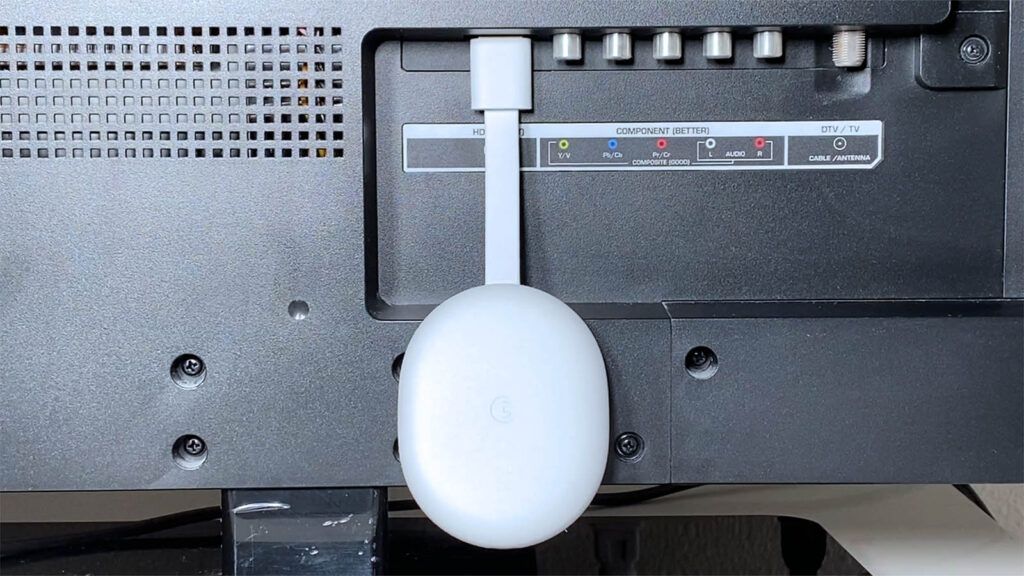

We’re still dealing with a small, discrete device with a flexible HDMI “tail.” Unlike streaming boxes that sit on your entertainment center by your TV, these dongle-style devices are meant to plug straight into your HDMI port and hang off that connection on the back of your TV. Size-wise, however, this new Chromecast is a fair bit larger than earlier models.
In the box, you’ll get the Chromecast device itself, a remote control, batteries, adapter, and a power cord that uses the USB Type-C standard. As far as what this new Chromecast can do, some highlights include 4K HDR support, including Dolby Vision and HDR10+. Earlier Chromecast models have supported 4K and HDR, but we’ll dive into what sets this new one apart a little later.
You also get three color options: Sky, Sunrise, and Snow. And if you’re wondering why color choice would matter for a device that’s meant to be hidden behind your TV, well that color choice also applies to the included remote control.
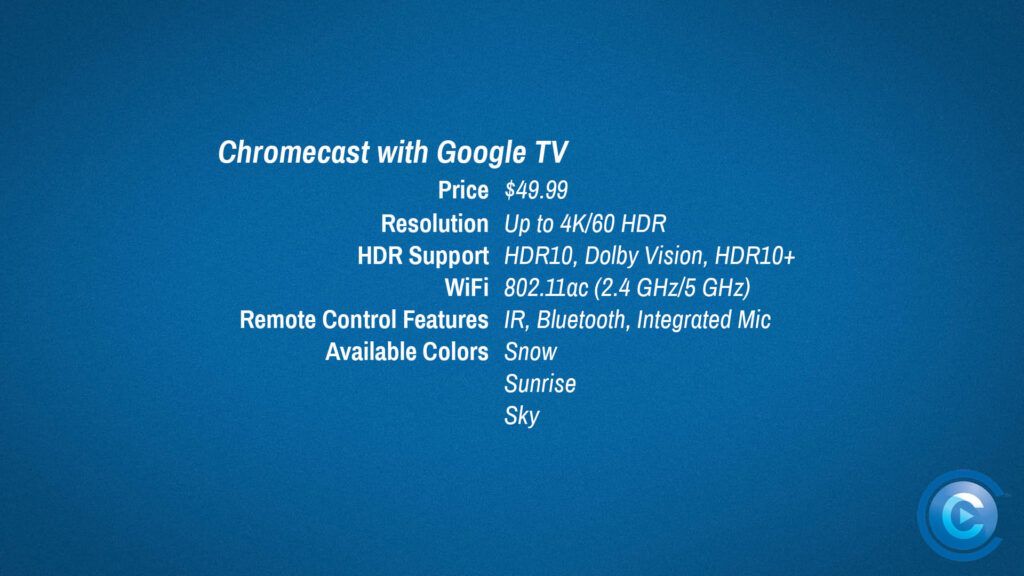

Of course, one of the biggest features here is the addition of Google TV, which acts sort of like a new interface layer on top of the existing Android TV. We’ll get into actually using the software in the next section, but to sum up: Instead of presenting a grid of available streaming apps, Google TV aims to offer suggestions tailored to your viewing habits and preferences.
When you fire up your Chromecast, you’ll see options like “Top Picks for You,” categories like Action or Comedy, or suggestions based on movies you’ve watched. Those recommendations pull from a variety of streaming services, including ones you may or may not subscribe to, but the goal is, ideally, more relevant viewing options for you.
Setup and Performance
One of the hallmarks of the Chromecast line, and HDMI dongles in general, is the ease in setup. And that continues here — you just plug the Chromecast into your TV’s HDMI port and then plug in the power cord. And since it’s a USB Type C port, you don’t have to worry about which way you’re holding the power cord when you plug it in.
Once it’s connected and powered up, it’s time to set up your Chromecast. You’re given a couple of options here. You can set up the device via your TV, which means inputting some details via the included remote control. It’s certainly doable, but if you want to save some time, you can download the Google Home app and set up your Chromecast via a phone or tablet.
You’ll enter details like your email address and WiFi login, and then you can customize things by designating a location for your Chromecast. This can be useful if you have several devices around your home to manage, and it’s something we’ve seen on other platforms.
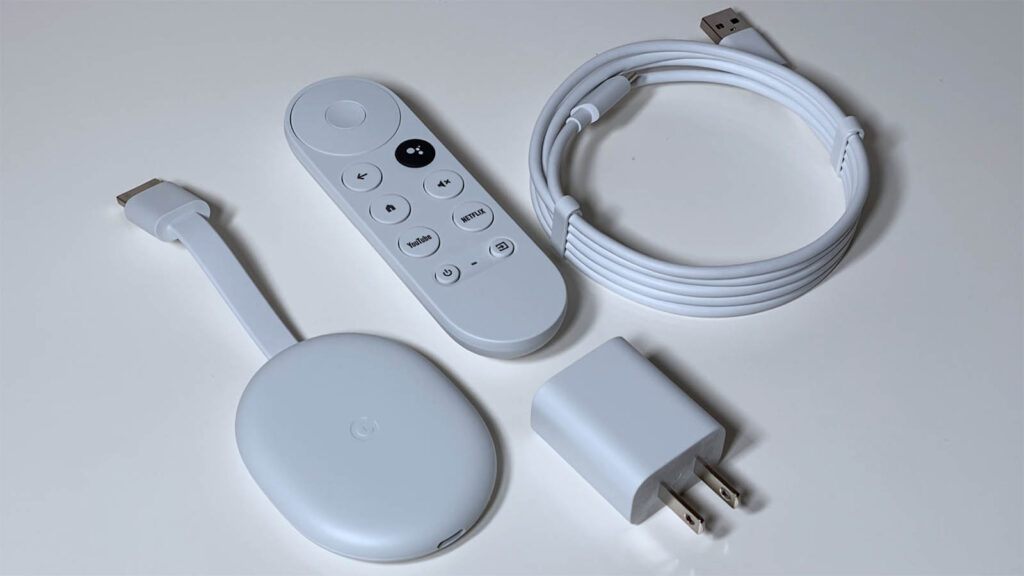

And once the setup process is done and the Chromecast has downloaded key updates, you’ll be greeted by the Google TV home screen.
If you’re used to the standard Android TV experience on an Nvidia Shield TV Pro or TiVo Stream 4K, you might pick up on a few similarities here, but it’s clear Google’s trying to add some new layers here.
For one, instead of focusing on individual apps, you’re presented with a list of content choices pulled from several services. You can customize things by telling Google which services you’re subscribed to, but not all services currently support that level of personalization.
If you tell Google which services you’re subscribed to, those get higher priority among the recommendations, but you’ll still probably see options from other services, including rentals and digital purchases.
At the top of the screen, you’ll see a menu bar for categories like Search, Movies, Shows, Apps, and Library. You’ll also see a section called “For You” which serves as the initial home screen. YouTube TV users also get access to a Live category.
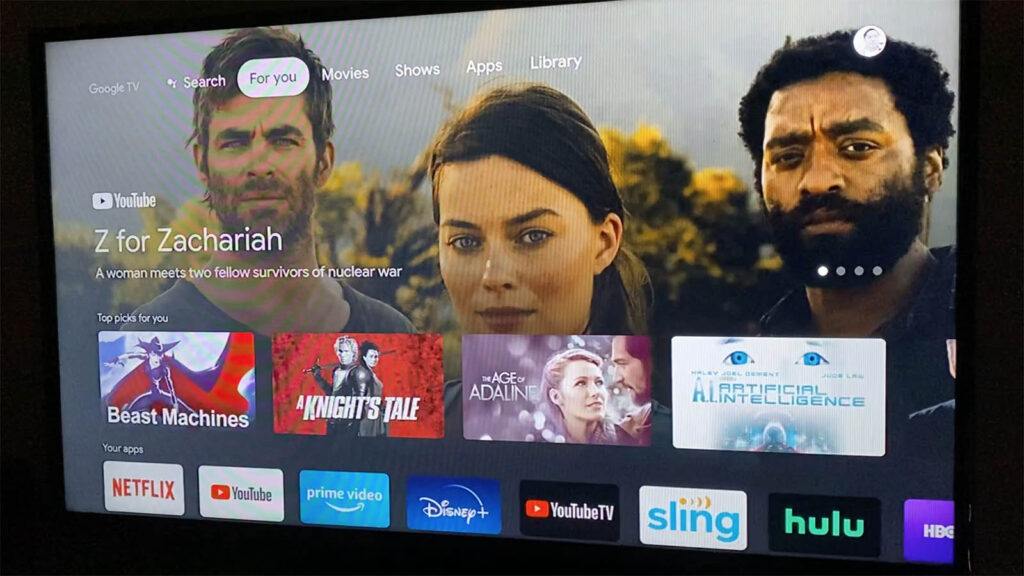

And if the service-agnostic approach isn’t to your liking and you want to head straight to a specific service, you can customize which apps show up on the For You screen. And you can head to the Apps section to access and install even more. Beyond that, there’s even an “Apps Only” mode you can access via settings. That view strips away the recommendations, leaving you with just tiles for your apps. It’s certainly functional, but perhaps not the most ideal way to experience Google TV. Still, the option is there if you want it.
As far as general use, we tested the Chromecast on 1080p, 4K, and 4K HDR content and it handled it all just fine. We did run into occasional sluggishness when browsing menus and options with the Chromecast. This behavior was hard to pin down and replicate, but occasionally, we’d have to wait a tad longer for an input to register or for a menu to fully populate with titles. It’s not a dealbreaker, especially for a $50 device, but it’s something you might notice if you’re coming from snappier, higher-end devices.
One of the other concerns right now is the inconsistent HDR support in a few apps. For example, as of our testing in October of 2020, the Disney+ app on the Chromecast supports HDR10, but not Dolby Vision. A quick flip to the Disney+ app on our LG’s built-in webOS platform showed the exact same movie, but with Dolby Vision available.
We saw similar issues with Vudu, where digging through the options showed Dolby Vision support on our LG TV’s app, but no such support listed on the Chromecast’s version of the Vudu app.
Also, the Chromecast defaults to Dolby Vision for menus and browsing content, which may or may not be to your liking. We’ve seen the same behavior on the recent 2020 Roku Ultra and the TiVo Stream 4K. Thankfully, just like those devices, there’s a way to turn the feature off. Just head to display settings and select Match Content Dynamic Range and your TV should switch to HDR only when HDR content is being displayed. Overall, however, HDR performance itself seemed solid, but be aware that there are some app inconsistencies in the Chromecast versions of certain services.
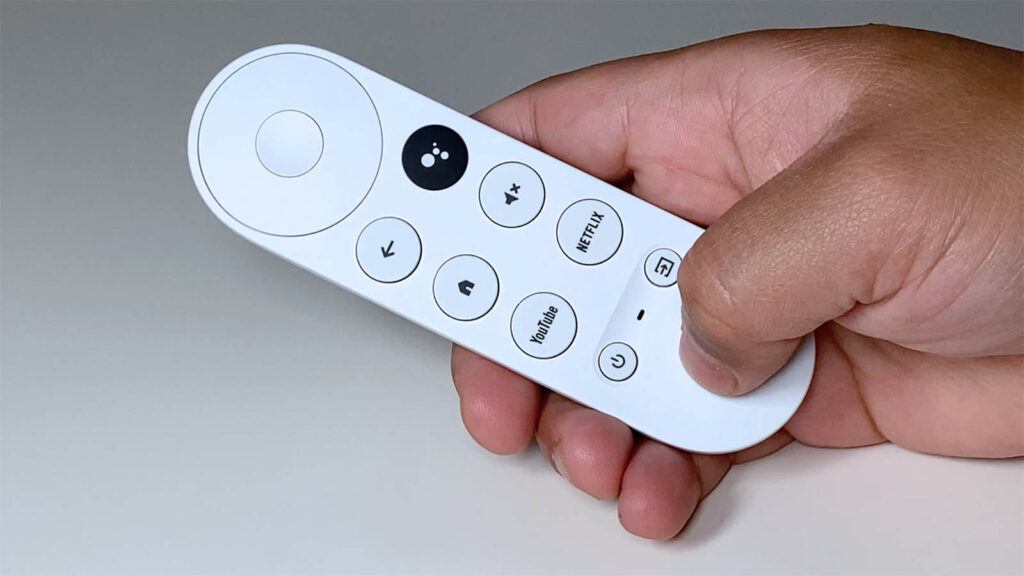

The included remote is comfortable and easy to use. It doesn’t take long to get comfortable using it without looking at which button you’re pressing. The smooth, rounded shape might be a bit slippery at times, but the functionality and overall design score more good points than bad. The voice search feature works pretty much as expected. You can hold the Google Assistant button and speak your search. Options like “Play Captain America Winter Soldier,” or “find Super Simple Songs on YouTube,” worked fine, but if it hears you incorrectly, the Chromecast might steer you way off course.
For instance, I asked, “How to rent Mulan,” and got back search results for “how to move a log.” Speaking slower and more clearly helped on later attempts, but be prepared for the usual voice assistant quirks.
As for overall performance, we tested the Chromecast by running it through series of apps to see how quickly it could load each. We did a similar test with the recent Roku devices and it uncovered some fascinating performance numbers. For this run, we swapped out a couple Roku-specific apps. And so our test suite this time includes: Netflix, YouTube, Amazon Prime Video, Disney +, Hulu, ESPN, Pluto TV, Sling TV and Crackle. And then we fired up Netflix one more time to see if it could load the app any quicker the second time.
For comparison’s sake, we ran the similarly priced Roku Streaming Stick+, TiVo Stream 4K, and Fire TV Stick 4K through the same gauntlet and here’s how they compare to one another.


Overall, the Chromecast with Google TV easily holds its own against similarly priced rivals, all while offering up Google-backed content suggestions that should evolve as it gets to know you.
Wrapping it All Up
In the end, you do indeed get a lot of streaming bang for your 50 or so bucks. The Chromecast with Google TV adds a lot of welcome features and usability to the Chromecast line — not just through controlling your content on your TV, but also with the included and comfortable remote. For those who like the simplicity of the Chromecast’s design, but wished it behaved and performed more like Roku’s and Amazon’s streaming devices, this latest model succeeds.
It’s not perfect, however. There are still some app issues and feature support inconsistencies we’d like to see cleared up soon, especially when things like Dolby Vision are available on the exact same service through other platforms. And yes, there are occasional performance hiccups when exploring the menus.
But at $49.99 with a solid remote, the Chromecast with Google TV is definitely worth considering if you want a capable, portable, and affordable media streamer.



